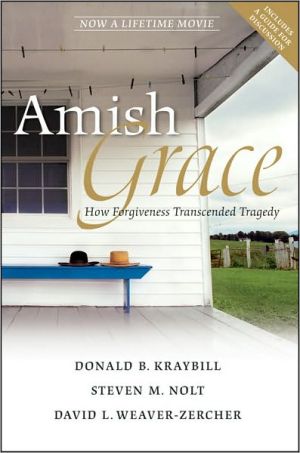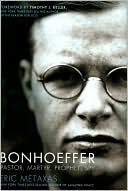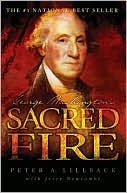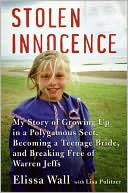Amish Grace: How Forgiveness Transcended Tragedy
On Monday morning, October 2, 2006, a gunman entered a one-room Amish school in Nickel Mines, Pennsylvania. In front of twenty-five horrified pupils, thirty-two-year-old Charles Roberts ordered the boys and the teacher to leave. After tying the legs of the ten remaining girls, Roberts prepared to shoot them execution style with an automatic rifle and four hundred rounds of ammunition that he brought for the task. The oldest hostage, a thirteen-year-old, begged Roberts to "shoot me first and...
Search in google:
Praise for Amish Grace"A story our polarized country needs to hear: It is still grace that saves."—Bill Moyers, Public Affairs Television"In a world where repaying evil with evil is almost second nature, the Amish remind us there's a better way. In plain and beautiful prose, Amish Grace recounts the Amish witness and connects it to the heart of their spirituality."—Sister Helen Prejean, author, Dead Man Walking"Faced with the notorious Amish aversion to publicity, reporter after reporter turned to the authors...to answer one question: How could the Nickel Mines Amish so readily, so completely, forgive? While the text provides a detailed account of the tragedy, its beauty lies in its discovery of forgiveness as the crux of Amish culture. Never preachy or treacly, it suggests a larger meditation more than apt in our time."—Philadelphia Magazine"This balanced presentation . . .blends history, current evaluation of American society, and an examination of what builds community into a seamless story that details the shootings while it probes the religious beliefs that led to such quick forgiving. Recommended." —Library Journal"Professors Kraybill, Nolt, and Weaver-Zercher have written a superb book—a model of clear, forceful writing about a tragedy and its aftermath. They have an obvious affection for the Amish yet ask tough questions, weigh contradictions, and explore conundrums such as how a loving God could permit schoolgirls to be massacred." —National Catholic Reporter Publishers Weekly When a gunman killed five Amish children and injured five others last fall in a Nickel Mines, Pa., schoolhouse, media attention rapidly turned from the tragic events to the extraordinary forgiveness demonstrated by the Amish community. The authors, who teach at small colleges with Anabaptist roots and have published books on the Amish, were contacted repeatedly by the media after the shootings to interpret this subculture. In response to the questions "why-and how-did they forgive?" Kraybill and his colleagues present a compelling study of "Amish grace." After describing the heartbreaking attack and its aftermath, the authors establish that forgiveness is embedded in Amish society through five centuries of Anabaptist tradition, and grounded in the firm belief that forgiveness is required by the New Testament. The community's acts of forgiveness were not isolated decisions by saintly individuals but hard-won "countercultural" practices supported by all aspects of Amish life. Common objections to Amish forgiveness are addressed in a chapter entitled, "What About Shunning?" The authors carefully distinguish between forgiveness, pardon and reconciliation, as well as analyzethe complexities of mainstream America's response and the extent to which the Amish example can be applied elsewhere. This intelligent, compassionate and hopeful book is a welcome addition to the growing literature on forgiveness. (Sept. 21)Copyright 2007 Reed Business Information
http://catalogimages.wiley.com/images/db/pdf/9780470344040.excerpt.pdf
Preface xiPart 1 1The Nickel Mines Amish 3The Shooting 17The Aftermath 29The Surprise 43The Reactions 53Part 2 65The Habit of Forgiveness 67The Roots of Forgiveness 85The Spirituality of Forgiveness 99The Practice of Forgiveness 113Part 3 123Forgiveness at Nickel Mines 125What About Shunning? 141Grief, Providence, and Justice 155Amish Grace and the Rest of Us 173Afterword 185Acknowledgments 189The Amish of North America 191Endnotes 205Resources for Further Reading 219The Fetzer Institute 223The Authors 225Index 227
\ Publishers WeeklyWhen a gunman killed five Amish children and injured five others last fall in a Nickel Mines, Pa., schoolhouse, media attention rapidly turned from the tragic events to the extraordinary forgiveness demonstrated by the Amish community. The authors, who teach at small colleges with Anabaptist roots and have published books on the Amish, were contacted repeatedly by the media after the shootings to interpret this subculture. In response to the questions "why-and how-did they forgive?" Kraybill and his colleagues present a compelling study of "Amish grace." After describing the heartbreaking attack and its aftermath, the authors establish that forgiveness is embedded in Amish society through five centuries of Anabaptist tradition, and grounded in the firm belief that forgiveness is required by the New Testament. The community's acts of forgiveness were not isolated decisions by saintly individuals but hard-won "countercultural" practices supported by all aspects of Amish life. Common objections to Amish forgiveness are addressed in a chapter entitled, "What About Shunning?" The authors carefully distinguish between forgiveness, pardon and reconciliation, as well as analyzethe complexities of mainstream America's response and the extent to which the Amish example can be applied elsewhere. This intelligent, compassionate and hopeful book is a welcome addition to the growing literature on forgiveness. (Sept. 21)\ Copyright 2007 Reed Business Information\ \ \ \ \ Library JournalKraybill (senior fellow, Young Ctr. of Elizabethtown Coll.), Steven M. Nolt (history, Goshen Coll.), and David L. Weaver-Zercher (American religious history, Messiah Coll.) have each authored or edited numerous works on the Amish. Here, they explain the Amish community's reaction to the Nickel Mines, PA, murder of five of its schoolchildren, especially its forgiveness of the killer and expressions of grace toward his family. While the reader will gain important glimpses into the grit and grime of daily Amish life, broader understanding of Amish practices of forgiveness will enable reflection on the meaning and value of it. Those familiar with Joe Mackall's Plain Secrets: An Outsider Among the Amish, the 2005 documentary The Amish: How They Survive, or John L. Ruth's Forgiveness: A Legacy of the West Nickel Mines Amish Schoolwill appreciate this balanced presentation, which blends history, current evaluation of American society, and an examination of what builds community into a seamless story that details the shootings while it probes the religious beliefs that led to such quick forgiving. Recommended as an essential title for current affairs and religion collections; also recommended for public libraries wanting to offer general readers with an interest in history and crime a work that nourishes both mind and soul.\ —Leroy Hommerding\ \ \








